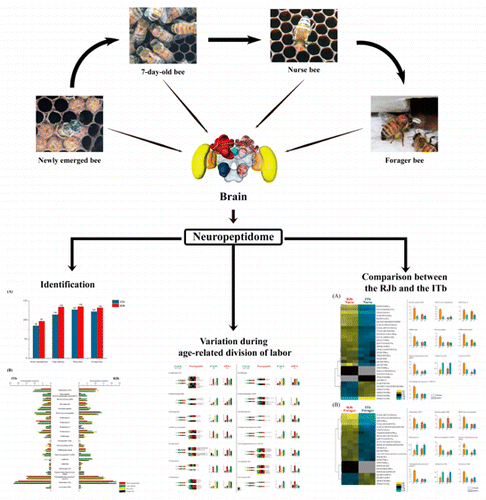Quantitative Neuropeptidome Analysis Reveals Neuropeptides Are Correlated with Social Behavior Regulation of the Honeybee Workers
Date:2015-10-10
Abstract:
Neuropeptides play vital roles in orchestrating neural communication and physiological modulation in organisms, acting as neurotransmitters, neuromodulators, and neurohormones. The highly evolved social structure of honeybees is a good system for understanding how neuropeptides regulate social behaviors; however, much knowledge on neuropeptidomic variation in the age-related division of labor remains unknown. An in-depth comparison of the brain neuropeptidomic dynamics over four time points of age-related polyethism was performed on two strains of honeybees, the Italian bee (Apis mellifera ligustica, ITb) and the high royal jelly producing bee (RJb, selected for increasing royal jelly production for almost four decades from the ITb in China). Among the 158 identified nonredundant neuropeptides, 77 were previously unreported, significantly expanding the coverage of the honeybee neuropeptidome. The fact that 14 identical neuropeptide precursors changed their expression levels during the division of labor in both the ITb and RJb indicates they are highly related to task transition of honeybee workers. These observations further suggest the two lines of bees employ a similar neuropeptidome modification to tune their respective physiology of age polyethism via regulating excretory system, circadian clock system, and so forth. Noticeably, the enhanced level of neuropeptides implicated in regulating water homeostasis, brood pheromone recognition, foraging capacity, and pollen collection in RJb signify the fact that neuropeptides are also involved in the regulation of RJ secretion. These findings gain novel understanding of honeybee neuropeptidome correlated with social behavior regulation, which is potentially important in neurobiology for honeybees and other insects.
More details are available on the link below: http://pubs.acs.org/doi/10.1021/acs.jproteome.5b00632
